
Prof. Sabine Liebscher
Sabine Liebscher obtained her MD from the Technical University of Dresden, Germany before joining the Lab of Paul Greengard, New York, USA in 2007. She then pursued her PhD at the Ludwig-Maximilians University Munich (lab of Christian Haass) and the Max Planck Institute of Neurobiology (lab of Tobias Bonhoeffer) in Munich, Germany. In 2014 she became a Clinicial Scientist group leader at the University hospital Munich, Germany and started her own independent group in 2017 (Emmy Noether group leader) at the same institution in 2017. In 2023 she was appointed as W2 Professor for Cellular Neurophysiology at the University of Cologne, Cologne, Germany and as of 2025 Sabine Liebscher is a professor and the director of the Institute of Systems Neurobiology at the Medical University of Innsbruck, Austria.
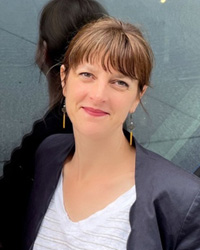
Dr. Caroline ROUAUX
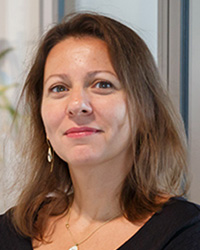
Professor Magdalini Polymenidou
Magdalini Polymenidou is Associate Professor of Biomedicine at the Department of Quantitative Biomedicine of the University of Zurich (UZH). She joined UZH as an Assistant Professor in 2013 and since then, her research team studies the molecular mechanisms of amyotrophic lateral sclerosis (ALS) and frontotemporal dementia (FTD). Her team combines structural and biochemical analyses with cellular assays and animal models to identify new therapeutic targets from ALS and FTD. Her work was recognized by many awards, including the ERC Consolidator Grant, the NIBR Global Scholars Award, the Georg-Friedrich Götz Prize, and the EMBO Young Investigator Award, among others.
As a postdoctoral fellow in the group of Don Cleveland at the University of California in San Diego (USA), she used genome-wide approaches to understand the function of the RNA-binding proteins TDP-43 and FUS, which play key roles in the pathogenesis of ALS and FTD. She made important contributions to our understanding of TDP-43 pathophysiology including the initial identification of its RNA targets in the normal brain, a study that signified a major first step in understanding its normal function, whose perturbation is a key step in disease. Since 2013, her independent research team studies the molecular mechanisms of ALS and FTD combining structural and biochemical analyses with cellular assays and animal models aiming to identify new therapeutic targets for these diseases. The Polymenidou team explored the neuropathological heterogeneity of TDP-43 and provided evidence for the existence of “TDP-43 strains”. Her lab solved the high-resolution structure of the N-terminal domain (NTD) of TDP-43 and showed that NTDs from neighboring TDP-43 molecules interact to form physiological self-oligomeric structures in cells. The formation of these physiological oligomers is necessary for the normal splicing regulation by TDP-43. Importantly, the study demonstrated that this physiological TDP-43 oligomerization antagonizes its pathological aggregation. The team has also developed tools to detect and quantify physiological oligomerization and aggregation in cells. In recent work, the team has developed iNets, a highly reproducible and long-lasting human neural culture model that effectively simulates neurodegeneration, and identified NPTX2 as a novel crucial player in TDP-43 proteinopathies.

Dr.Jeehye PARK
Dr. Jeehye Park is a Senior Scientist in the Genetics and Genome Biology Program at Sick Kids Research Institute and an Associate Professor in the Department of Molecular Genetics at University of Toronto. She is a Canada Research Chair (Tier 2) in Molecular Genetics & Neurodegenerative Diseases.
Park lab currently focuses on studying the molecular mechanism of a neurodegenerative disease, amyotrophic lateral sclerosis (ALS), utilizing a multi-disciplinary approach including biochemistry, molecular cell biology and fly and mouse genetics to ultimately improve understanding of the disease and develop therapeutic strategies. Recently, Park lab established an ALS model, MATR3 S85C knock-in mice, that closely mimics the human disease genotype and phenotype, offering enhanced disease relevance compared to existing models in the ALS field and providing an unprecedented opportunity to study the early-stage development and progression of ALS. Using this mouse model, they will 1) identify the early disease events in the disease process, 2) determine the role of disease-associated microglia (DAM) during early disease progression and 3) determine how the ALS-linked mutation alters MATR3 function and properties to cause neurodegeneration. Their findings will uncover the early disease process, which may change the view of how ALS develop and progress. Defining the key early events will facilitate the development of early prevention and intervention strategies for ALS.
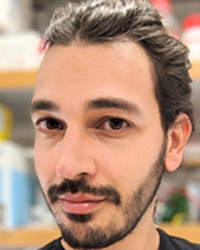
Prof. Steven Boeynaems
In the Boeynaems lab, we aim to understand how cells and organisms sense and respond to cellular stress, which remains a poorly understood area of cell biology. Over the years, this has led us to study a variety of stress paradigms in physiology and disease with an emphasis on the role of tandem repeats, intrinsically disordered proteins, and biomolecular condensates. Our goal is to create biosynthetic and -mimetic tools for synthetic biology, and to translate fundamental biological insights into novel therapeutic approaches for human diseases. We have specifically focused our attention on a spectrum of neurodegenerative diseases that centers on amyotrophic lateral sclerosis (ALS) and frontotemporal dementia. Our work has contributed deep insights into the role of condensates in the development of the hallmark protein aggregation pathology, we have implicated nucleocytoplasmic and axonal transport defects in ALS disease etiology, and we have identified new genetic risk factors and promising targets for therapeutic modulation.
Steven Boeynaems obtained a B.Sc. and M.Sc. degree in Bioengineering at KU Leuven, before receiving his Ph.D. in Biomedical Sciences in 2017 working in the Ludo Van Den Bosch lab at KU Leuven and the Flemish Institute for Biotechnology (VIB) in Belgium. He joined the Aaron Gitler lab at the Genetics Department of Stanford University as an EMBO Long-Term Fellow for his postdoctoral work. In 2022, Steven became an Assistant Professor at the Department of Molecular and Human Genetics at Baylor College of Medicine and an Investigator at the Jan and Dan Duncan Neurological Research Institute at the Texas Children’s Hospital in Houston. He is a CPRIT scholar, and a member of the Therapeutic Innovation Center, the Dan L Duncan Comprehensive Cancer Center, and the Center for Alzheimer’s and Neurodegenerative Disease.
In the Boeynaems lab, we aim to understand how cells and organisms sense and respond to cellular stress, which remains a poorly understood area of cell biology. Over the years, this has led us to study a variety of stress paradigms in physiology and disease with an emphasis on the role of tandem repeats, intrinsically disordered proteins, and biomolecular condensates. Our goal is to create biosynthetic and -mimetic tools for synthetic biology, and to translate fundamental biological insights into novel therapeutic approaches for human diseases. We have specifically focused our attention on a spectrum of neurodegenerative diseases that centers on amyotrophic lateral sclerosis (ALS) and frontotemporal dementia. Our work has contributed deep insights into the role of condensates in the development of the hallmark protein aggregation pathology, we have implicated nucleocytoplasmic and axonal transport defects in ALS disease etiology, and we have identified new genetic risk factors and promising targets for therapeutic modulation.

Dr Alan Yu
Dr Alan Yu is Head of the Neuroinflammation Laboratory at The Florey Institute of Neuroscience and Mental Health. He received his PhD from The University of Queensland Diamantina Institute (UQDI) in 2015, for studying the inner workings of the innate immune systems upon bacterial infection under co-supervision of Prof. Antje Blumenthal and Prof. Ian Frazer. In 2016, he proposed to investigate the biology behind neurodegenerative processes through the lens of innate immunology, earned a highly prestigious 5-year WEHI Centenary Fellowship and started his postdoctoral training in the laboratory of Prof. Seth Masters.
Dr Yu was strategically recruited to the Florey Institute in late 2021. Dr Yu aspires to establish an interdisciplinary research program that brings expertise in biomedical/clinical sciences, computational biology and an entirely novel spatial multi-omics technology via partnership with world-class leaders to transform the way we perceive the cause(s) and pathogenesis of ALS, with clinical impacts.
Dr Yu has received grants from the NHMRC (Ideas Grant and Investigator Grant), a Medicine/Science Grant from the CASS Foundation, and has been nominated by the WEHI Director for 2021 Australian Museum Eureka Prize for Outstanding ECR, based on his achievements in ALS research.
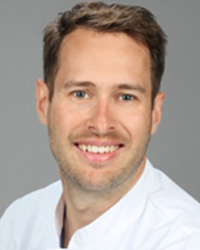
Dr. David Brenner
Dr. Brenner studied medicine at the Ruprecht-Karls-Universität Heidelberg. In his MD thesis at the German Cancer Research Center Heidelberg he examined the pathogenic role of the CD95 system in circulating myeloid cells in a mouse model for Parkinson’s disease in the group of Prof. Dr. Ana Martin-Villalba. He obtained postdoctoral training at Prof. Jochen Weishaupt’s lab in Ulm and Mannheim. During this period, he contributed to the identification of the ALS genes NEK1 and KIF5A, and studied the downstream effects of haploinsufficiency of TBK1 in transgenic mouse models.
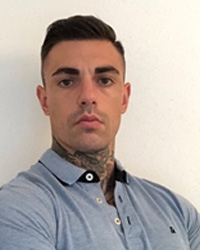
Dr. Alberto Catanese
Both scientists recently teamed-up with the goal to identify the molecular mechanisms underlying ALS linked to mutations in the NEK1 gene (NEK1-ALS). To that end they use multi-omic and hypothesis-driven differential analyses of isogenic and patient-derived iPSC-derived motor neurons bearing NEK1 loss-of-function and missense variants followed by validation in CNS autopsy tissue from NEK1-ALS patients (cooperation with the University of Umea). The project will provide important mechanistic insights into NEK1-ALS with the potential to impact genetic counselling of variants of uncertain significance and fuel the identification of specific biomarkers and pharmacological targets for future clinical trials for NEK1-ALS.
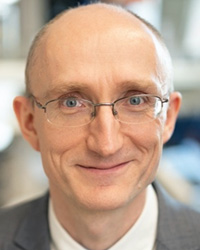
Dr. Lewandowski
Sebastian Lewandowski received his undergraduate degree from the University of Gdansk and obtained his PhD in molecular biology from the Nencki Institute of Experimental Biology in Warsaw. He performed his postdoctoral training at laboratory of Prof. Ulf Eriksson at the Karolinska Institute. Dr Lewandowski is a member of the Swedish Medical Association, Swedish Society for Neuroscience and a steering group member of the junior faculty at the Karolinska Institute. In addition to the support from the Frick Foundation his group is supported by the Ulla-Carin Lindquist Foundation for ALS, Swedish Research Council and the Olle Engkvist Foundation.

Dr. Daniel Mordes
His recent research efforts have involved the characterization of the cellular effects of dipeptide repeat proteins associated with the C9ORF72 repeat expansion. Additionally, his lab is focused on understanding how perturbations in autophagy-associated pathways, which act to maintain protein homeostasis, can lead to familial forms of ALS. With the Frick Foundation, he aims to develop new models for these types of ALS using human stem cell lines. Overall, the goal of his lab is to investigate the pathogenesis of neurodegenerative diseases to facilitate the development of targeted therapies. His research has also been recognized by awards from the ALS Association, the Multiple System Atrophy Coalition, and the National Institute of Neurological Disorders and Stroke.

Drs. Kevin P. Kenna
Dr Kevin Kenna is an assistant professor at the University Medical Centre Utrecht (Netherlands). He received his PhD from Trinity College Dublin (Ireland) in 2015, for analyses of rare genetic variation across genes, networks and biological pathways implicated in amyotrophic lateral sclerosis (ALS). He conducted his postdoctoral training at the University of Massachusetts Medical school, in the laboratory of Prof John Landers.
As a group leader, Dr Kenna continues to work on using genomic technologies to guide translational research and informative genetic testing in ALS. His group combines advanced computational techniques with genetic methods and multi-omic profiling of human post mortem tissue and stem cell models. In particular, Dr Kenna is focused on extending his work to the 98.5% of human genetic variants with effects in the non-coding genome. He does this in close collaboration with project MinE, the Dutch ALS centre and additional collaborators in Europe and the US.
Dr Kenna has received a vidi award from ZonMW, compute grants from NWO and additional funding awards from the Dutch ALS foundation (ALS Stichting).
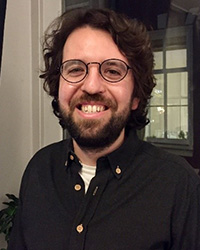
Dr. James Mills
In his current positions, Dr Mills leads computational biology teams that focus on utilising and integrating multi-omic approaches, including whole genome sequencing, transcriptomics, and DNA-methylation, to elucidate pathogenic mechanisms in complex diseases such amyotrophic lateral sclerosis, Parkinson’s disease and epilepsy. He continues to investigate regulation of the protein-coding transcriptome via non-coding RNA, as well as expanding his research lines to investigate structural variation in the human genome and gene expression changes at the level of a single cell.
Dr Mills has received grants from the Netherlands Parkinson Foundation (Stitching Parkinson’s fonds), the Top Sector for Knowledge and Innovation, and Amsterdam Neuroscience.
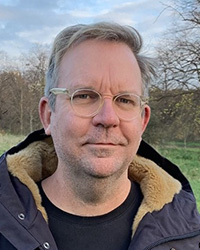
Dr. Bradley Smith
Dr.Smith is a Senior Research Fellow at the Maurice Wohl Clinical Neuroscience Institute in Camberwell, London. He obtained a PhD in 2007 studying the neurogenetics of ALS in the laboratory of Professor Chris Shaw. From 2010 as a Postdoctoral Researcher in Professor Shaw’s lab he led the UK arm of the Familial ALS Exome Sequencing Consortium and identified mutations in TUBA4A and most recently in the calcium and phospholipid binding gene Annexin A11.
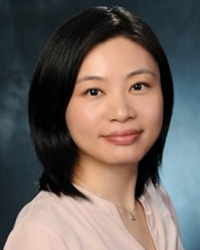
Dr. Lin Guo
Dr. Lin Guo is an Assistant Professor in the Department of Biochemistry and Molecular Biology at Thomas Jefferson University. She received her Ph.D. in Chemistry in 2011 from The University of Pennsylvania where she developed single-molecule spectroscopic methods to study protein folding and peptide-membrane interaction in Dr. Feng Gai’s laboratory. In 2012, Dr. Guo joined Dr. James Shorter’s laboratory in the Department of Biochemistry and Biophysics at the Perelman School of Medicine at the University of Pennsylvania as a postdoctoral fellow.
Dr. Guo’s current research continues to understand the molecular mechanisms underlying the aberrant phase transitions of ALS disease proteins. She aims to leverage her understanding of aberrant phase transition to develop strategies with therapeutic potential to prevent and reverse these toxic events. Specifically, through the support of the Frick Foundation, Dr. Guo will develop potentiated Kapβ2 variants with enhanced disaggregation activity against the fibrillization of ALS-causing FUS mutants. She will also develop RNA-based oligonucleotides to prevent and reverse FUS aberrant phase transition. The proposed study will provide two strategies to reverse FUS aberrant phase transition, which can potentially be developed into therapeutics for ALS. Moreover, investigation on how to potentiate Kapβ2’s function and how RNA oligonucleotides function to reverse FUS aberrant phase transition will give important insight in developing other agents to reverse this aberrant event that leads to neurotoxicity.
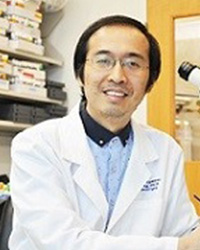
Dr. Ke Zhang
Ke Zhang is an Assistant Professor in the Department of Neuroscience at Mayo Clinic, Florida. Dr. Zhang studied X-ray crystallography as an undergraduate student in the laboratory of Zihe Rao at Tsinghua University (Beijing) and joined the Ph.D. program at Baylor College of Medicine to continue his research in X-ray crystallography. However, he soon realized that his research interest was actually in neurogenetics and decided to pursue a career in that direction.
Currently, Dr. Zhang seeks to understand the role of aberrant liquid-liquid phase separation (LLPS), a process that can trigger protein aggregation, in ALS pathogenesis and explore its potential as a therapeutic target. The Zhang lab (http://www.kezhanglab.net) aims to identify small molecules and genes that modulate LLPS of dipeptide repeat proteins, toxic proteins implicated in C9ORF72-mediated ALS, understand their molecular mechanisms, and test their potentials as drugs/drug targets in iPS and animal models. Dr. Zhang has been awarded the Milton Safenowitz fellowship from the ALS Association and the Springboard fellowship from the Target ALS consortium.

Prof. Ross Buchan
Ross Buchan is an Assistant Professor in the Molecular and Cellular Biology department at the University of Arizona, Tucson. He obtained his PhD in the lab of Ian Stansfield at the University of Aberdeen, where he studied how tRNAs and codon usage in open reading frames impacts protein synthesis. His post-doc was in Roy Parker’s lab (currently at CU Boulder) where he studied P-bodies and stress granules, which are dynamic cytoplasmic membraneless organelles implicated in regulation of mRNA function and cellular stress responses.
Since establishing his own lab, Dr Buchan’s interest in ALS stems from the fact that TDP-43, a protein that aggregates in affected neuronal cells in 97% of all ALS patients, also localizes in stress granules. TDP-43 concentration in stress granules may facilitate TDP-43 aggregation and cellular toxicity; this is an area of current interest to the lab. Additionally, while investigating whether granulophagy could affect TDP-43 persistence in the cytoplasm, Dr Buchan’s lab surprisingly identified a new role for endocytic trafficking in the clearance of TDP-43 to the lysosome, which limits both cytoplasmic TDP-43 aggregation and toxicity. Additionally, cytoplasmic accumulation of TDP-43 impairs endocytic function, which may be an important underlying disease mechanism. Current goals are to define the mechanism by which cytoplasmic TDP-43 is trafficked to lysosomes for turnover in an endocytic manner, and how TDP-43 can impair endocytosis, using both yeast and human cell models. Evaluation of the therapeutic potential of modifying endocytic activity in various TDP-43 ALS models is also a key interest.
Dr Buchan has previously received a grant from the ALS Association.

Dr. Aaron Haeusler
Dr. Aaron Haeusler is a Principle Investigator in the Jefferson Weinberg ALS Center and Assistant Professor in the Department of Neuroscience at Jefferson University. He obtained his Ph.D. in biochemistry where he pursued a rigorous understanding of the molecular mechanisms that control gene regulation under the direction of Dr. Jason Kahn at the University of Maryland, College Park. After completing his Ph.D. studies in 2011, Dr. Haeusler joined Jiou Wang’s laboratory at Johns Hopkins University to focus his postdoctoral work on employing and developing disease models to understand the mechanistic contributions of nucleotide repeat expansion (NRE) genetic mutations in neurological and neuromuscular disorders.
Group 1: Sandrine Da Cruz, Ludwig Cancer Research Institute, Univ. California San Diego USA. “Elucidating the contribution of oligogenic mutant gene synergy to ALS
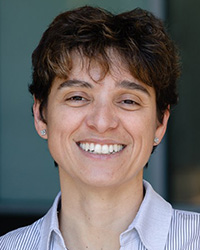
Dr. Da Cruz
As an independent investigator she is pursuing her long-standing interest in disease mechanism and therapy development for ALS and frontotemporal dementia (FTD), combining sophisticated mouse genetics and new in vitro human cellular models using neurons from ALS/FTD patient-induced pluripotent stem cells and muscle cells.
She received the Milton-Safenowitz Postdoctoral Fellowship from the Amyotrophic Lateral Sclerosis Association, the Fellowship for Advanced Researchers from the Swiss National Science Foundation and awards from the Muscular Dystrophy Association, the Robert Packard Center for ALS Research at Johns Hopkins, the Amyotrophic Lateral Sclerosis Association, and the Neurological Diseases and Stroke Institute of the NIH.
Group 2: Meredith Jackrel, Dept. Chemistry, Wash. Univ. St. Louis, USA. “Engineering Substrate-Optimized Hsp104 Disaggregases to Counter TDP-43, FUS, and DPR Protein Misfolding and Aberrant Phase Transitions in ALS”

Dr. Meredith Jackrel
Dr. Jackrel has also received a grant from the ALS Association.
Group 1: Sandra ALMEIDA, Dept. of Neurology, University of Massachusetts Medical School, Worcester, Massachusetts, USA. “Exploring the Therapeutic Benefits of Targeting SUPT4H1 in C90RF72-related ALS/FTD”
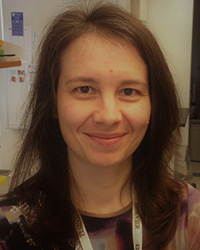
Dr. Sandra Almeida
Currently, Dr. Almeida is working to further our understanding of the molecular mechanisms of ALS, FTD and related disorders. She uses patient-derived human neurons to understand how ALS/FTD mutations impact cellular physiology and lead to their pathogenic consequences. She is particularly interested in exploring and testing potential therapeutic interventions to halt or slow the progression of these and related diseases.
Dr. Almeida has received awards from the Association for Frontotemporal Degeneration and the Amyotrophic Lateral Sclerosis Association.
Group 2: Edor KABASHI, Institut du Cerveau et de la Moelle (ICM), Hôpital Pitié-Salpêtrière and Inserm, Paris, France and Nicolas CHARLET-BERGUERAND, Dept. Translational Medicine Medicine, Institute of Genetic & Molecular & Cellular Biology, IGBMC, Strasbourg, France. “Exploring the oligogenic properties of C90orf72 and ATXN2 intermediate repeats in ALS models of disease using transgenic models of disease.

Dr. Edor Kabashi
Since 2011, Dr. Kabashi is a researcher at the National Institute of Health Research (Inserm) and leads an independent team at the Brain and Spinal Cord Institute (ICM) in Paris, France. His team was awarded the Inserm Avenir and recently obtained the European Research Council Consolidator grant. Dr. Kabashi has developed zebrafish models for the major ALS genes, including C9orf72, TDP-43 and FUS to study common pathogenic mechanisms. Using these vertebrate models of disease, the team aims to identify epistatic interactions and common pathogenic cascades amongst these genetic factors that cause motor neuron degeneration. By developing innovative screening protocols for bioactive compounds, the team hopes to identify novel therapeutic avenues for ALS patients.
Group 3: Nicolas CHARLET-BERGUERAND, Department of Translational Medicine at the Institute of Genetic and Molecular and Cellular Biology (IGBMC, Strasbourg, France).
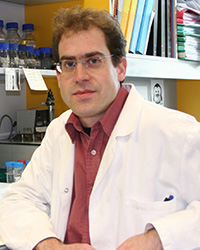
Dr. Nicolas Charlet-Berguerand
Group 1: Jochen H. Weishaupt. Ulm University, Germany ``Molecular pathogenesis of ALS linked to TBK1 haploinsufficiency``

Dr. Jochen Weishaupt
His research topics include the role and dysregulation of methylation and microRNAs in ALS, cell biological mechanisms of prion-like disease spreading in ALS, and alterations of the innate immune system in ALS patients. Moreover, he is the principle investigator of a project aiming to identify novel ALS genes by whole exome sequencing. Employing whole exome sequence data from more than 250 familial ALS patients, an international consortium led by Jochen Weishaupt, was recently able to identify haploinsufficiency of the gene TBK1 as a cause for familial forms of ALS and the clinically and genetically related disease frontotemporal dementia. The project supported by the Frick Foundation aims to elucidate the downstream mechanisms of TBK1 mutations by mouse genetics. Jochen Weishaupt has won the Heinrich-Pette-Prize of the German Neurological Society (DGN) for his scientific contributions.
Group 2: Christopher J. Donnelly, Univ. Pittsburgh, USA. ``Neurotoxic protein mislocalization initiates neural injury in C90RF72``
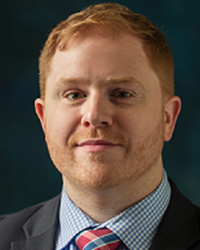
Dr. Christopher Donnelly
The goal of Dr. Donnelly’s work is to understand the contribution of nuclear pore dysfunction and impaired nuclear trafficking in age-dependent neurodegeneration. Nuclear pore complexes function to prevent the passive diffusion of large proteins into and out of the nuclear compartment. Protein components of the nuclear pore complex can be incredibly long-lived in post-mitotic cells and rarely turnover. Degradation of these long-lived nuclear pore proteins results in age-dependent mislocalization of nuclear and cytoplasmic proteins. Recent studies have identified nuclear pore pathology and impaired nuclear trafficking of proteins and RNAs in C9ORF72 ALS. The Donnelly lab is investigating how impaired nucleocytoplasmic transport affects nuclear and cytoplasmic protein populations and hope to identify specific proteins families that confer toxicity when mistrafficked in C9ORF72 ALS.
The goal of these studies are to identify if genetic or pharmacological modulation of the nuclear transport pathway is a neuroprotective strategy to treat C9ORF72 ALS/FTD. The Donnelly also lab hopes to establish image-based pharmacodynamic markers to assess whether defects in nuclear transport contribute to disease onset in non-C9ORF72 ALS populations.
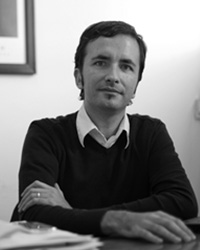
Professor Claudio Hetz
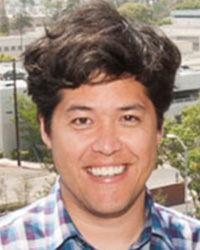
Professor Justin Ichida
Group 1: Contribution of neuronal and muscular expression to the toxicity of FUS truncation Luc Dupuis & Clotilde Lagier-Tourenne

Dr. Luc Dupuis

Dr. Clotilde Lagier-Tourenne
Clotilde Lagier-Tourenne is Assistant Professor in the Department of Neurosciences and Assistant Investigator in the Ludwig Institute for Cancer Research at the University of California San Diego. She was trained as a Medical Geneticist with Pr. Jean-Louis Mandel and Pr. Michel Koenig in Strasbourg and with Pr. Michio Hirano at Columbia University where her research focused on the identification of new genetic causes of neurological disorders. During her postdoctoral training in the laboratory of Pr. Don Cleveland, she has explored the regulatory network between two ALS-related RNA binding proteins, TDP-43 and FUS/TLS, and their RNA targets. She has applied approaches in genomics to study the impact of TDP-43 and FUS/TLS on RNA splicing and gene regulation and demonstrated the broad role of these proteins in RNA processing.
She received the Alphonse Laveran Prize, the Milton-Safenowitz Postdoctoral Fellowship from the Amyotrophic Lateral Sclerosis Association and the Muscular Dystrophy Association Career development Award.
Group 2: Neuronal signaling as a therapeutic target for ALS
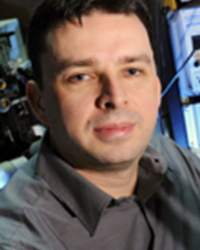
Dr. Brian D. McCabe
Dr. Brian D. McCabe is an Assistant Professor at Columbia University in New York, U.S.A. He is a graduate of Trinity College Dublin in Ireland, received his Ph.D. from the University of Cambridge in England and was a postdoctoral fellow at the University of California at Berkeley before moving to New York City.
Group 1: Biochemical and genetic analysis of FUS-p32 interaction
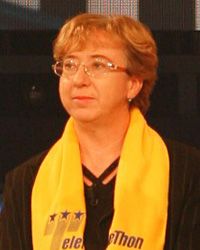
Dr. Maria Teresa Carrì
Maria Teresa Carrì is Professor in the Department of Biology at the University of Rome “Tor Vergata”. She is a biochemist and neuroscientist. She received her degree in Biology from the University of Rome Sapienza in 1981 and is currently a professor of Biochemistry in the Department of Biology at the University of Rome “Tor Vergata”.
Over the past twenty years, Dr. Carrì’s projects have mainly focused on understanding the molecular mechanisms underlying ALS pathogenesis. She uses a combination of cell and animal models to investigate two primary areas of interest: the impact of misfolded SOD1 on neuronal viability and the role of mitochondrial damage in different models for familial ALS.
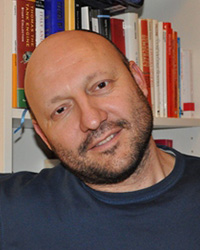
Dr. Gianluca Cestra
In the last year of postdoc he joined the lab of Fly Genetics of Tian Xu, at the Department of Genetics and HHMI of Yale Medical School, where he studied synaptic vesicle recycling in Drosophila melanogaster.
In 2006 Dr. Cestra came back to Italy and established an independent research group combining the use of Drosophila as model system for ALS with cell biology and biochemistry of mammalian motor neurons.
Group 2: Investigating the causal link between impaired calcium homeostasis calcium signaling and ER stress in ALS
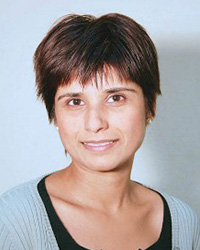
Dr. Smita Saxena
Dr. Saxena is an Assistant Professor at the University of Bern since June 2010. Her research is focused on understanding cellular stress mechanisms underlying motoneuron vulnerability in ALS. Using in vivo animal models and ex vivo spinal cord slice cultures we investigate several key questions related to ALS such as the link between ER stress and Calcium homeostasis, and the identification and evaluation of genetic modifiers of ALS as therapeutic targets.
In March 2010, she was awarded the Swiss National Science Foundation Professorship and she started her own laboratory at the Institute of Cell Biology in Bern where we continue focus on disease mediated stress mechanisms in ALS and in Spinocerebellar ataxia 1 (SCA1).
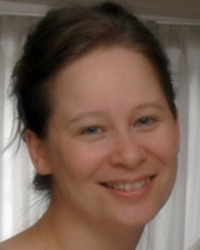
Dr. Professor Christine Vande Velde
Christine Vande Velde, B.Sc., Ph.D. (University of Manitoba) is an Assistant Professor in the Department of Medicine at the Université de Montréal since October 2007. Dr. Vande Velde is focussed on understanding the cell biological mechanisms underlying ALS pathogenesis. She uses a combination of cell culture and animal models to investigate two primary areas of interest: the impact of misfolded SOD1 on mitochondria and the role of TDP-43 in stress granules.
Dr. Vande Velde has won a number of awards for her research including a Paralyzed Veterans’ of America fellowship, a Muscular Dystrophy Association Development grant, and she is currently a Research Scholar of the of FRSQ.

Dr. Eran Hornstein
Eran Hornstein, MD, PhD is affiliated with the Departments of Molecular Genetics at the Weizmann Institute of Science in Rehovot, Israel. He obtained his MD/PhD at The Hebrew University- Hadassah Medical School, Jerusalem, Israel. After Medical internship at the Hadassah Medical Center he moved to a postdoctoral training with Cliff Tabin at the Department of Genetics, Harvard Medical School. When he returned to Israel in 2006, he established a program that focuses on the study of microRNA genes in human disease. Dr. Hornstein is incumbent of the Helen and Milton Kimmelman Career Development Chair and the Dr. Sydney Brenner Chair. In recent years a major focus of his lab is the investigations of dysregulated miRNA in ALS.
Dr. Parker has won a number of awards for his research including a Hereditary Disease/HighQ Foundation postdoctoral fellowship, an INSERM Young Investigator Award, a FRSQ fellowship and is currently a CIHR New Investigator.
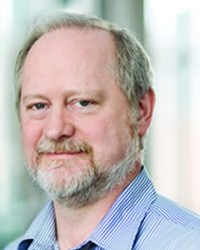
Dr. Guy A. Rouleau
Dr. Guy A. Rouleau is a neurologist and geneticist. He received his degree in Medicine from the University of Ottawa in 1980 and a degree in Genetics from Harvard University in 1989. He is currently a professor in the Department of Medicine at the Université de Montréal. In addition to his research activities, Dr. Rouleau is Head of the CHU Ste-Justine Research Centre, he is Director of the Centre of Excellence in Neuromics of Université de Montréal (CENUM), and Director of the Réseau de médecine génétique appliquée (RMGA) of the Province of Quebec.
Dr. Rouleau trained a large number of scientists and physicians who, today, work at universities across Canada, the United States, Japan, Brazil, Australia, and Europe. He has published more than 400 scientific papers, many of which in prestigious journals such as Nature, Science, Nature Genetics and The American Journal of Human Genetics. Dr. Rouleau received numerous awards for his contributions to science and society. In 2007, he was nominated Officer of the Ordre National du Québec, the highest distinction given by the Quebec government.

Dr. Erik Storkebaum
Erik Storkebaum, Pharm., Ph.D., is an independent Research Group Leader at the Max Planck Institute for Molecular Biomedicine in Muenster (Germany) since June 2010. Dr. Storkebaum combines Drosophila and mouse genetics to study the molecular mechanisms of motor neurodegenerative disorders. More specifically, his research aims at deciphering the role of RNA biogenesis in ALS pathogenesis. Furthermore, he also studies the molecular pathogenesis of Charcot-Marie-Tooth (CMT) neuropathy associated with mutations in tRNA synthetases.
Dr. Storkebaum has received a number of awards for his research, including the Pharmaleuven Prize for best undergraduate thesis, the Baron Simonart Prize for his PhD thesis, and the Galenus Prize, together with Dr. Diether Lambrechts, for preclinical pharmacological studies on the therapeutic potential of VEGF for ALS.
Group 1: Chemical genetic screens for TDP-43 modifiers and ALS therapeutics

Dr. Pierre Drapeau
Since 1996 (at the Université de Montréal since 2006), Dr. Drapeau has been studying the development of the motor network in zebrafish by combining cellular neurophysiology and molecular genetics. He records and images the activity patterns of identified spinal cord and hindbrain neurons in normal and genetically modified embryos. His work has led to the discovery of a novel mechanism of synaptic transmission at fast neuromuscular junctions and the role of synaptic transmitters in promoting neural differentiation during development. The long-term goal of his research is to elucidate the molecular choreography of motor network formation and function. More recently, Dr. Drapeau has discovered that human genes can be expressed in zebrafish, allowing for the validation of mutations in degenerative diseases such as ALS and ataxia and developmental disorders such as autism and schizophrenia. He is collaborating on a large-scale genomics project to identify mutations of synaptic genes related to developmental brain diseases that he is validating in zebrafish embryos. They have discovered that de novo mutations (in patients but not in their parents) are a major cause of autism and schizophrenia.
Dr. Drapeau has garnered national awards for his research, such as scholarships from the FRSQ and MRC/CIHR, a Canada Research Chair in Neuroscience (since 2006) and the 2006 Barbara Turnbull Award for Spinal Cord Research. He has obtained international collaborative awards from the MRC(Canada)-INSERM(France), FRSQ(Canada)-INSERM(France) and the International Human Frontier Science Program. Dr. Drapeau also has extensive teaching experience such as with courses of the International Brain Research Organization and the Marine Biological Laboratory, Woods Hole, MA, where he was a Member of the Corporation from 1991-1997
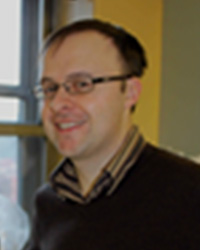
Dr. Alex Parker
Dr. Parker has won a number of awards for his research including a Hereditary Disease/HighQ Foundation postdoctoral fellowship, an INSERM Young Investigator Award, a FRSQ fellowship and is currently a CIHR New Investigator.
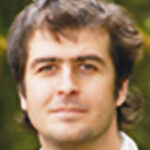
Dr. Edor Kabashi
During his post-doctoral training at the University of Montreal under the direction of Drs. Guy Rouleau and Pierre Drapeau, as the Tim Noel fellow awarded from CIHR and ALS Canada, Dr. Kabashi was the lead author in the discovery of TDP-43 mutations in ALS, and has published a series of articles in very high impact journals.
Group 2: Tubulin acetylation in motor neuron degeneration: a translational approach
Department of Neurology and of Experimental Neurology University Hospital Leuven, University of Leuven, School of Medicine Vesalius Research Center, Flanders Institute for Biotechnology
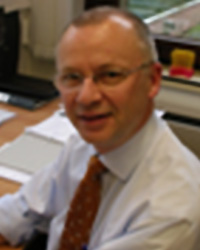
Dr. Wim Robberecht

